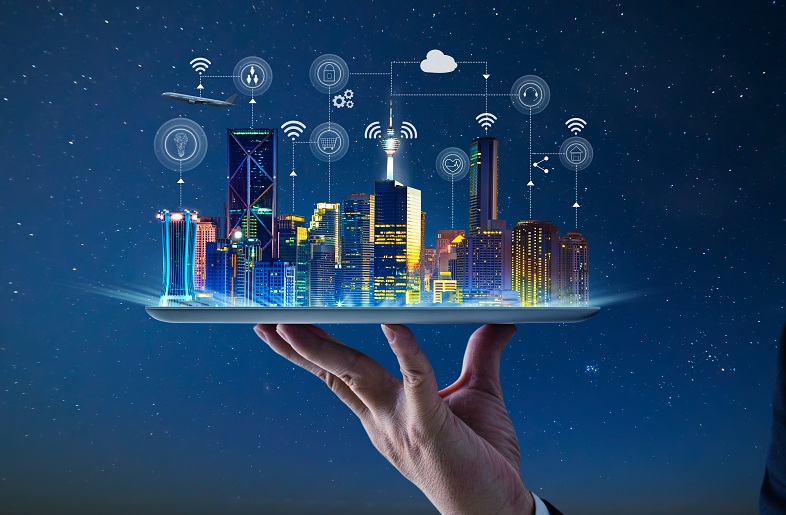The Internet of Things (IoT) has turned into a guide of digital transformation for some companies across industries. The disruptive innovation enables organizations to remain associated with their users to give a definitive customer experience. For instance, in view of the insights it can uncover, companies can come up with one of a kind, creative approaches to appreciate and impact customer movement including behavior and purchasing patterns. With that, they can change the way buyers’ access data while furnishing organizations with significant information which can help increase financial advantages.
Utilizing IoT for activities, for example, predictive maintenance and resource management alone has the potential monetary impact of $4 trillion to $11 trillion by 2025.
Out of the 8.4 billion devices everywhere throughout the world, just 1% are connected. Every year, the government loses 99% of the opportunity to be progressively productive, improve public security, diminish operational expenses and improve citizen participation. At that point, comes the Internet of Things (IoT). IoT allows the public area to significantly change services through information, analytics, and automation. In basic terms, the Internet of Things alludes to any object connected with the internet enabling it to consistently send and get information. Once networked on the web, information can be effectively removed and analyzed, all that could possibly be needed to alter the public sector’s method for giving citizen services.

Having IoT at the center of government services can make way to more noteworthy wellbeing, strategic traffic management, proficient travel, and smart public infrastructures. The vision of Smart Cities – towns that harness information from natives, mobile applications, government frameworks, and other third-party applications and databases to settle on smart and automated choices is a definitive objective.
Regardless of how complex private-segment deployments of cognitive computing, the Internet of Things, or advanced analytics might be, the objectives are still generally simple. The goals in business are to boost benefits and limit misfortune. Each company uses these information-driven procedures for the upper hand; winners are recognized from failures by the resourcefulness of their use cases, not technology.
Since governmental entities aren’t troubled by the financial limitations of private organizations, they have extensively more prominent freedom to devise new use cases for increasing the viability and effectiveness of advanced analytics. The most persuading of these deployments widen the scope and yield of the IoT through computer vision to lessen costs, grow the abilities of human workers, and better prepare companies for the decentralized data scene’s difficulties.
More at https://www.analyticsinsight.net/utilisation-iot-computer-vision-public-sector/
Utilizing IoT for activities, for example, predictive maintenance and resource management alone has the potential monetary impact of $4 trillion to $11 trillion by 2025.
Out of the 8.4 billion devices everywhere throughout the world, just 1% are connected. Every year, the government loses 99% of the opportunity to be progressively productive, improve public security, diminish operational expenses and improve citizen participation. At that point, comes the Internet of Things (IoT). IoT allows the public area to significantly change services through information, analytics, and automation. In basic terms, the Internet of Things alludes to any object connected with the internet enabling it to consistently send and get information. Once networked on the web, information can be effectively removed and analyzed, all that could possibly be needed to alter the public sector’s method for giving citizen services.

Having IoT at the center of government services can make way to more noteworthy wellbeing, strategic traffic management, proficient travel, and smart public infrastructures. The vision of Smart Cities – towns that harness information from natives, mobile applications, government frameworks, and other third-party applications and databases to settle on smart and automated choices is a definitive objective.
Regardless of how complex private-segment deployments of cognitive computing, the Internet of Things, or advanced analytics might be, the objectives are still generally simple. The goals in business are to boost benefits and limit misfortune. Each company uses these information-driven procedures for the upper hand; winners are recognized from failures by the resourcefulness of their use cases, not technology.
Since governmental entities aren’t troubled by the financial limitations of private organizations, they have extensively more prominent freedom to devise new use cases for increasing the viability and effectiveness of advanced analytics. The most persuading of these deployments widen the scope and yield of the IoT through computer vision to lessen costs, grow the abilities of human workers, and better prepare companies for the decentralized data scene’s difficulties.
More at https://www.analyticsinsight.net/utilisation-iot-computer-vision-public-sector/
Comments
Post a Comment